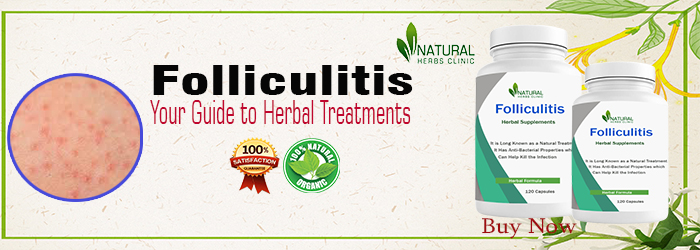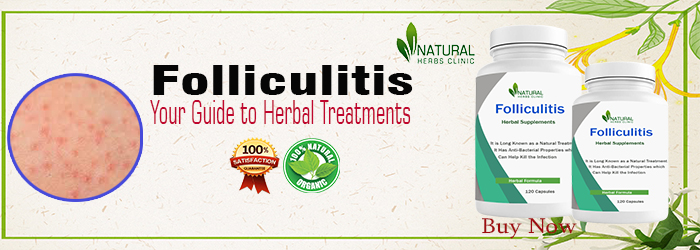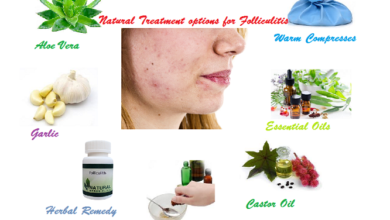Effective Folliculitis Home Treatments Your Natural Skin Care Solutions

In this comprehensive guide, we will explore effective Folliculitis Home Treatments that can provide relief without the side effects of traditional medications.

Understanding Folliculitis
Folliculitis can be both difficult and bothersome to deal with. This typical skin ailment is characterized by redness, itching, and occasionally even pus-filled lumps as a result of irritated hair follicles brought on by bacterial or fungal infections. While there are medical options, there are a number of reliable Folliculitis Home Treatments that can help with folliculitis.
Before delving into Natural Remedies for Folliculitis, it’s crucial to understand the root cause of folliculitis. This condition can result from bacteria, fungi, or even viruses entering the hair follicles. Shaving, friction from tight clothing, and excessive sweating can exacerbate the condition. Maintaining proper hygiene and avoiding these triggers is the first step toward prevention.
Symptoms of Folliculitis
Folliculitis is a dermatological condition that occurs when hair follicles become inflamed. It can affect people of all ages and backgrounds. This condition is often characterized by the following symptoms: Folliculitis Home Treatments can lessen the symptoms.
Common Symptoms
- Red Bumps and Pimples: Folliculitis typically presents as small red bumps or white-headed pimples around hair follicles.
- Itching and Discomfort: Affected areas can be itchy and uncomfortable, causing irritation.
- Pus-filled Blisters: In some cases, folliculitis can lead to the formation of pus-filled blisters.
- Tenderness and Swelling: The affected skin may become tender and swollen to the touch.
Types of Folliculitis
Folliculitis comes in various forms, each with its unique characteristics. Some of the most common types include:
Bacterial Folliculitis
Bacterial folliculitis is caused by bacterial infections, often due to Staphylococcus aureus. It can affect various body parts and may require antibiotics for treatment.
Pseudofolliculitis Barbae
Commonly known as razor bumps, this type of folliculitis occurs after shaving. It primarily affects the beard area and can be managed by adopting proper shaving techniques.
Hot Tub Folliculitis
This type of folliculitis is a result of exposure to contaminated water in hot tubs or pools. It usually resolves on its own but may require medical attention in severe cases.
Eosinophilic Folliculitis
Eosinophilic folliculitis is a rare form of folliculitis that is often associated with underlying health conditions. It presents as recurrent itchy bumps.
Causes of Folliculitis
Folliculitis can be triggered by various factors, including:
Bacterial Infections
Bacteria, such as Staphylococcus aureus, can invade hair follicles, leading to infection and inflammation.
Fungal Infections
Fungal overgrowth, especially by yeast-like fungi, can cause folliculitis. This type is more common in humid climates.
Irritation
Friction from clothing, tight hairstyles, or harsh chemicals can irritate hair follicles, leading to folliculitis.
Weakened Immune System
A compromised immune system can make individuals more susceptible to folliculitis, especially the chronic forms.
Treatment Options
Effective treatment for folliculitis depends on its cause and severity. Here are some common treatment approaches:
Antibiotics
For bacterial folliculitis, antibiotics prescribed by a healthcare professional are often necessary.
Topical Antifungals
Fungal folliculitis can be treated with antifungal creams or shampoos.
Avoiding Irritants
Preventing folliculitis involves avoiding known irritants and practicing good hygiene.
Folliculitis Home Treatments Options
Warm Compresses
Warm compresses can be used to relieve irritated follicles and encourage drainage in the afflicted areas. The body can naturally combat the infection thanks to the heat’s increased blood circulation.
Tea Tree Oil
Renowned for its antibacterial and antifungal properties, tea tree oil is a popular Herbal Treatment for Folliculitis. Diluting a few drops in a carrier oil and applying it topically can aid in reducing inflammation and preventing further infection.
Aloe Vera Gel
Aloe vera is a mild but powerful remedy due to its healing and cooling qualities. Itching can be relieved and skin healing can be accelerated by applying fresh aloe vera gel. Using this gel in Folliculitis Home Treatments can be benefited to get rid of the condition naturally.
Herbal Approaches
Turmeric Paste
Making a paste using turmeric powder and water will enable you to take advantage of the anti-inflammatory and antibacterial qualities of turmeric. Applying this paste can help lessen discomfort and redness. helpful ingredients for Folliculitis Home Treatments.
Neem Oil
One of the effective Folliculitis Home Treatments ulcers that has antibacterial qualities is neem oil. Neem oil can be applied topically to soothe the skin and fight infections.
Calendula Cream
Calendula is well known for its ability to soothe the skin. Calendula cream can help to reduce inflammation and speed up healing when applied to injured areas. One of the useful Folliculitis Home Treatments for recovery.
Home Remedies for Folliculitis
Oatmeal Bath
Widespread folliculitis can find much-needed comfort in an oatmeal bath. Oats contain anti-itch qualities, thus taking a bath with oatmeal helps soothe itchy skin.
Apple Cider Vinegar Rinse
The skin’s pH equilibrium can be restored using apple cider vinegar’s acidity, which also inhibits bacterial growth. Folliculitis can be treated with it by diluting it with water and using it as a rinse.
Epsom Salt Soak
Magnesium is abundant in epsom salt, which may aid to lessen inflammation. It helps ease pain and accelerate recovery when added to a warm bath.
Lifestyle Changes
Loose-Fitting Clothing
Wearing loose-fitting clothing prevents friction and irritation, giving the skin a chance to heal.
Proper Hygiene
Maintaining good hygiene and avoiding sharing personal items can prevent the spread of folliculitis.
Dealing with folliculitis doesn’t always require a trip to the doctor. Nature provides us with numerous remedies that can effectively alleviate the discomfort and promote healing. From Natural Treatment for Folliculitis like tea tree oil and aloe vera gel to Folliculitis Home Treatments like turmeric paste and neem oil, these options offer a holistic approach to managing folliculitis at home.



